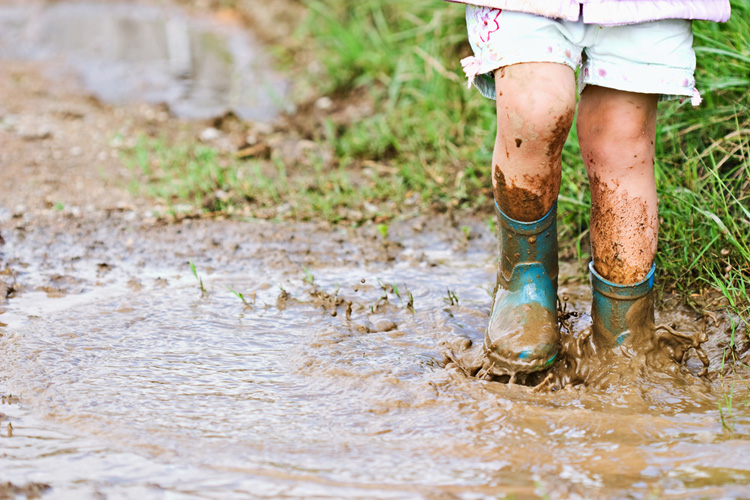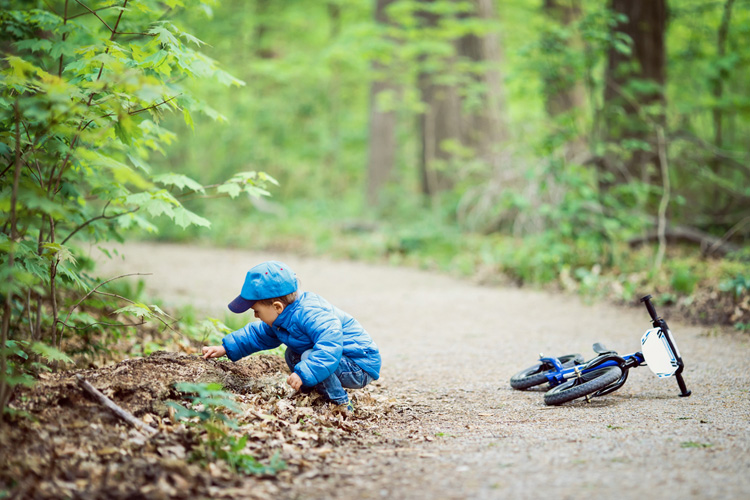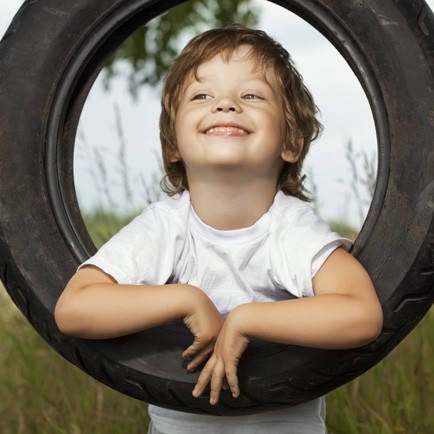Recent years has seen a change in the way we perceive early childhood education. There has been an emphasis on getting kids out into what used to be called “The Great Outdoors”; to play in natural surrounds to give them a chance to learn, create and develop skills, while enjoying the health benefits of being outside and enjoying play in its original form.
Like every old concept that has become new again, it has acquired a tag to help market the concept. It’s called Nature Play and the concept is fast becoming more recognised as a crucial element in early childhood schooling. Not only healthy and educational, there is also the “fun factor” — after all what kid in their right mind wouldn’t prefer to learn in a bush environment or natural playground setting?
Once just regarded as “normal” kids’ play, today it takes effort to encourage to get children, particularly young children, out into the fresh air, playing games and generally having fun. This vital learning process is being sponsored by government departments across Australia who see the community and health aspect of kids’ nature play as being so important to the wellbeing of society as a whole.
While supervision is still important — particularly of younger children — encouraging open, unstructured play to encourage children’s creativity and independence forms the very heart of Nature Play.
Simply put, Nature Play is getting kids back out to play in natural surrounds. In generations past, it was a given that young children would find a great deal of their entertainment in the outdoors. Whether this was playing in the bush, walking and playing games in street settings close to — or in — natural surrounds, or playing sport outdoors. However this hasn’t been the case in recent times as the focus of entertainment for children has been on indoor, rather than outdoor, pursuits.
This new computer and TV-based entertainment encourages a sedentary lifestyle and has had a negative effect on young people’s health. Scourges such as childhood obesity, depression and other sedentary disorders are now rife. (1)
The link between children’s increased sedentary lifestyles and illness has been confirmed by a number of studies. One major report — The Department of Health’s 2012 report on Australia’s Physical Activity and Sedentary Behaviour Guidelines noted that:
“On average, children and young people aged 5–17 years spent one and a half hours (91 minutes) per day on physical activity and over two hours a day (136 minutes) in screen-based activity with physical activity decreasing and screen-based activity increasing as age increased.” (2)
The report recommended that “To reduce health risks, children aged 5-12 years / young people aged 13-17 years, should minimise the time they spend being sedentary every day.”(3)

Nature Play is a concept designed to intervene in young children’s lives to encourage them to get back to nature and treat it as their backyard. The social, emotional and health benefits of doing so have been well documented. There is also a school of thought — backed by scientific studies — that says bringing our kids up in sanitised, germ-free environments has lessened our children’s exposure to bacteria and therefore they have a higher risk of contracting allergies and asthma. In many cases, children may experience a weaker immune system as a direct result of not being exposed to bacteria in dirt and other outdoor settings. (4)
This concept of exposing kids to dirt and mud is therefore, a key concept of Nature Play. The theory is to boost their immune systems by exposing them to nature.
According to early learning researchers Stuart Lester and Martin Maudsley in their study “Play, naturally: A review of children's natural play,” children develop a sense of self and independence through being close to nature. Children will benefit greatly from play where they have the opportunity to let their imaginations run wild. Whether they are in an outdoor setting or let loose in a setup — such as a playground — that has basic bush structures for them to change and mould their play bound only by their imagination. (5)
Nature playgrounds incorporate bushland and natural flora in a setting that will encourage motor skills while allowing kids to have old fashioned fun! In this episode of Gardening Australia, the team visit a parkland/playground for children, inspired by the original owners of the land, the Wurundjeri people. (6)
However the essence of the term Nature Play is to encourage unstructured play. To allow children to create, learn, play and discover stories either as individuals or in a group using their thoughts and creative enterprise and using the natural setting that lies around them.
The many benefits of encouraging children to play outside are physical exercise, getting vitamin D into their bodies from the sunshine and a chance for parents, grandparents and carers to observe them from a distance as they talk and create amongst themselves in a healthy environment.
This unstructured play that the concept of Nature Play encourages can be as varied as digging in the earth for grubs or worms, climbing trees and building cubby houses, to simply playing active games such as hide and seek in the bushland. The options are endless and only bound by reasonable safety issues and the kids’ imagination.
Rudolf Steiner
Perhaps one of the forebears of the Nature Play concept is the Steiner School system. Founded by Rudolf Steiner (1861-1925), the educator created classrooms with a unique setting where play was created with natural materials such as wood, clay and other natural elements. In Steiner schools, children are encouraged to craft toys and play equipment from material such as timber blocks, natural clays and papers. A calm, creative, natural environment is the aim of the Steiner movement with outdoor play areas created from timber materials. One that is conducive to encouraging their imaginations, temperaments and respect for one another and their adults.
Learning about native fauna and flora
Teaching children about our native flora and fauna is an important part of their education. Native plants have dried seeds which make great craft items which can be painted and used on cards and glued on picture frames. Even teaching children how to draw some of the simpler shapes of these plants and flowers extends and encourages their ability in drawing and use of colour.

Towards sustainability
However the benefits of providing space for children to explore nature also can be seen as a great investment in the future of our country and environment. Children will grow up with an intimate knowledge of bushland environment, with a better understanding of the environmental impacts of issues such as deforestation and climate change. Pressure on local government authorities to provider “green space” for children to play in towns and city suburbs will also build. This will benefit native flora and fauna by providing a wildlife corridor in built up areas. This lobbying on behalf of children may also extend to preserving more natural habitat in our national parks and reserves.
Not just kids…
There are many studies now that show suburbs and towns with a heavy emphasis on natural wooded areas and play areas are beneficial for health. This includes adults’ health as well as children. (7) As well as the importance of spending quality time with kids, and the physical benefits that getting out into the countryside brings, is the shared experience of exploring and playing games adults have with children. Being part of children’s play routine, using their imagination as the driving force, can be as magical for adults as it is for kids.
Coupled with a diet that is high in natural, unprocessed foods, that are suitable for healthy, growing children, nature play will help stimulate imagination, boost energy and — just as importantly — teach our kids about the environment and why it’s worth preserving.
Exposure to the Great Outdoors also develops in children a love of the bush, an appreciation of the great Australian forests and a knowledge of this that will stand them in good stead for the rest of their lives. While structured play is fantastic for the development of kids, it is the unstructured play that uses the children’s endless imagination that is the real focus of nature play.

Love Health?
From recipes, trends and discounts, expect great things via email this month.
More Great Reads!

Behind The Brand: Antipodes
Recipes We Love!

Clever Cookies












